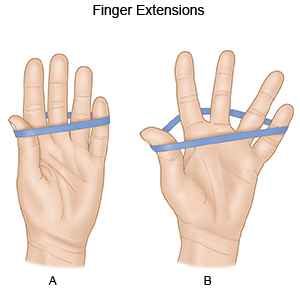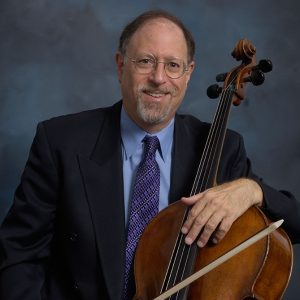
100 Cello Warm-Ups and Exercises Blog 16: Cello Geography Part 2: Extensions
Robert Jesselson
In many ways holding and playing the cello is just a “natural” addition to the body. The instrument rests nicely on our chest, we don’t need to twist and contort our arms like violinists, and if we employ weight, healthy balances and learn the ergonomically healthy use of the body we should have no pain or tension in playing. One of the only things that is not quite “natural” about playing the cello is our left-hand extensions. Stretching between the first and second fingers requires some specific training. As I mentioned in an earlier blog, I used to walk around Freiburg as a student with a cork between my fingers to help train this stretch:
…and it worked. Now I can stretch the fingers of my left hand much further than that of the right hand, as needed.
In training extensions one has to recognize that instead of half-steps between the fingers, we now have a whole step between the first and second fingers.
A common misunderstanding is thinking that there are extensions between the 2ndand 3rd fingers, or between the 3rd and 4th fingers. In advanced playing we will sometimes do whole-steps between these fingers, but I would highly recommend that this not be taught to students until their basic extensions are secure and their intonation is reliable.
I like to teach extensions through what I call the “Five-Step Process”.
So the “Five-Step Process” is:
- Release Thumb
- Pivot on First Finger
- Extend (Stretch) First Finger
- Arm Forward
- Fingers Down
Next it is important to exercise the extensions and check the intonation. I like to use the following three exercises to solidify the extensions.
At this point I think it is very helpful to go through the 2 octave scales and arpeggios in the Feuillard book (#10 and #11), identifying all the positions and making sure that the intonation is solid. I ask my students to write in all the positions as they learn and memorize the scales and arpeggios, with one key each week. This is what their Feuillard looks like with the positions written in.

Additional exercises can further solidify the extensions. I like to use the exercise on page 14 of the Levenson book “Foundation and Corrective Exercises for Violoncello” for this.

And then I often like to do the following cadence exercise that goes through all the positions by creeping up from minor to major keys using the extensions. I ask my students to be aware of all the neck positions as they do this exercise.
In next week’s blog I will discuss the “Mary System” for clarifying intonation in scales and in fingering patterns using three fingers.
Subjects: Practicing, Technique






